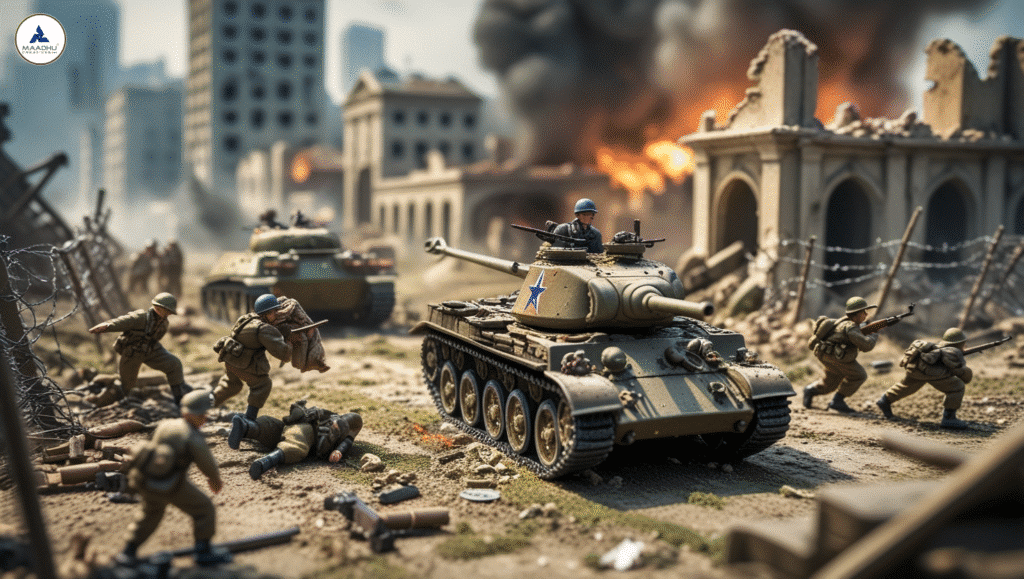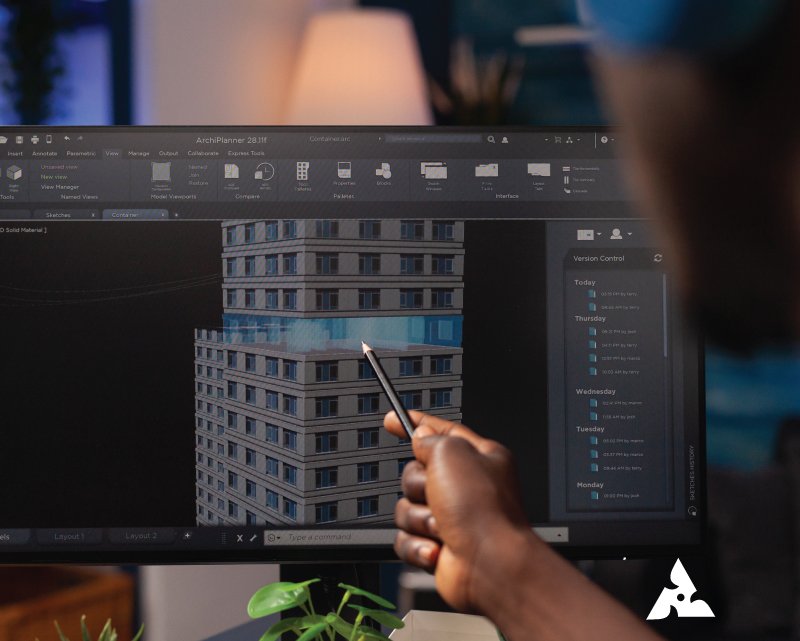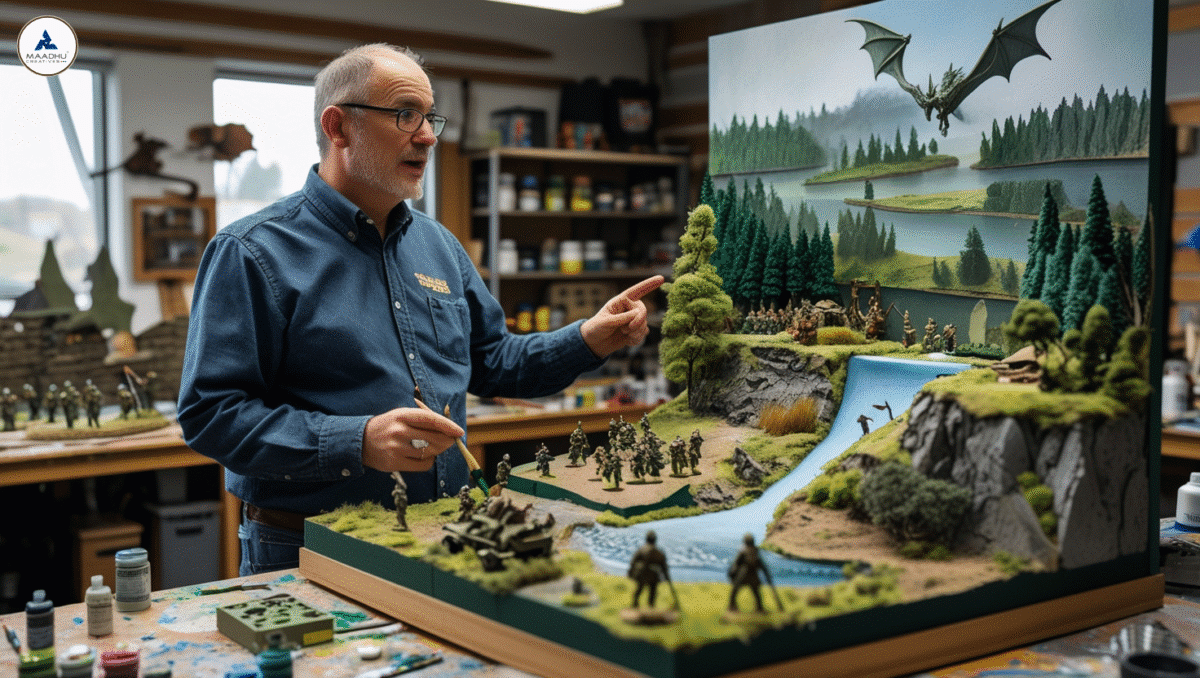Popular Vignette Model Themes Every Model Maker Should Know
Table of Contents
For model-making enthusiasts, building a vignette is one of the most exciting and rewarding aspects of model-making. A vignette is more than just setting up figures and scenery, it is a moment in time, a story told in miniature. Whether it’s a military diorama, a fantasy vignette, or just a pocket of life, a vignette allows the builder to concentrate on one moment in time.
Vignettes are smaller than dioramas however, just because they are smaller doesn’t make them any less powerful. They allow for a detailed and imaginative narrative in a small space. In this blog post, we will look at some interesting vignette themes all model makers should consider. Whether you are a scale model builder or just starting your journey in miniature diorama creation, these themes will help spur ideas for your next vignette!

What is a Vignette in Model Making?
A vignette in the model-making world is a scene that is miniature and tells a story or depicts a moment in time. It is a smaller replica than an actual diorama and usually shows just a part of a larger scene. For example, while a diorama might show an entire battle scene with soldiers and tanks, a vignette might only show one soldier taking cover or a tank crossing a destroyed bridge.
Vignettes are special in their detail and storytelling potential. A vignette usually focuses on a specific action or moment, so while there is a lot of potential for depth and emotion, it is more contained. Vignettes can range from a battle scene to a fantasy encounter to a serene nature scene. Each vignette can convey depth and tell an amazing story, transporting a viewer into a moment.
Top 5 Vignette Model Themes to Try
Military Vignettes: Relive the Intensity of War
Let’s dive into five popular vignette themes. Each of these themes offers a unique way to showcase your model-making skills and tells a different type of story.

Why It Works:
Military vignettes are all about recording the drama and passion of war. Whether you are recreating World War II, a Vietnam War battle, or even a medieval knight’s last stand, military vignettes allow you to not only study historical accuracy but also human emotion. You can depict one moment of heroism, the impact of battle, or the devastation of war.
How to Build It:
- Miniature Figures: Select detailed military miniatures such as soldiers, vehicles, and aircraft. Pick figures representing the era you wish to depict.
- Scale Model Scenery: Include detail elements specific to your set, like scene-setting remnants of combat debris, barbed wire, skeletal structures, or even remnants of fiery explosions.
- Storytelling Focus: Consider what moment you want to capture. Is it a soldier rescuing a downed buddy? A tank moving across the field? A soldier engaging in combat?
Tips:
- In order to make your miniature and model landscapes more realistic, remember to add things like dirt and mud, rust on vehicles, or burn marks on weapons.
- The vignette’s mood can also be highlighted by light. Consider using backlighting for dramatic shadow effects, which can enhance the overall look.
Fantasy Vignettes: Dive into Magical Worlds

If you play with fantasy scenes, this is your time to shine. A fantasy vignette can feature dragons, wizards, knights, or any number of mythological beasts in an otherworldly place. You’re able to create either grand battle scenes or contemplative moments between mythological beings, however you see fit. Fantasy vignettes allow you to create whole new worlds.
Why It Works:
Fantasy vignettes are also a great way to challenge yourself. Fantasy scenes do not carry a real-world precedent as historical ones do, so you are free to create anything you want! You can create bold new colors, magical effects, or impossible beasts in your creation to offer something dreamlike. Fantasy vignettes allow you to push realism out of the way and test your creative vision.
How to Build It:
- Miniature Models: You can use any figures you want: dragons, wizards, elves, goblins, etc. You can look to find custom figures, or you can sculpt your own for your vision.
- Scale Model Scenery: You can create fantasy scenery, including: enchanted forests, floating castles, bewitching ruins, etc.
- Effects: You can paint with glowing paint or use LED lighting to create a magical effect (e.g., a wizard casting a spell, a dragon breathing fire, etc.).
Tips:
- Dynamic Poses work well in fantasy vignettes. A knight charging at a dragon, or a wizard casting a spell, can add energy to your scene.
- Special effects like smoke, fire, and lightning can make your fantasy vignette feel more alive.
Architectural Vignettes: Showcase Iconic Structures

If you have a passion for architecture, you may want to think about a vignette related to famous buildings, bridges, or points of interest. Architectural vignettes show the design and beauty of built fabric. Architectural vignettes are a great way for modelers to explore detail and scale.
Why It Works:
Architectural vignettes afford model makers the chance to examine the details of buildings, streets, or entire cityscapes. Architectural vignettes can be visually pleasing in simple forms to highlight the detailing in your model, or they can tell the story of an important place or time.
How to Build It:
- Miniature Models: Use architectural models of buildings, bridges, or streets. Pay close attention to small details such as windows, doors, and textured surfaces.
- Scale Model Scenery: Surround the building with elements that reflect its environment trees, people, vehicles, or street furniture.
- Lighting: Use both natural and artificial lighting to enhance the best attributes of your structure.
Tips:
- Focus on materials, textures, brick patterns, stone, and wood, all tend to have their own attributes that can help add authenticity to your vignette.
- You may want to add figures to show the size and scale of your structure. This will help provide a point of reference for the viewer.
Nature Vignettes: Capture the Beauty of the Outdoors

For those who love nature, making up nature vignettes is an exciting way to display the beauty of landscapes, wildlife, and the great outdoors. These vignettes could include anything from a forest scene, a mountain scene, or a riverbank.
Why It Works:
Nature vignettes are a great way to examine and experiment with texture and colour in nature. The forest is lush and green, the river shines and sparkles, and the mountains are steep and tall. All of this allows you to explore using natural materials and create a realistic-looking scene.
How to Build It:
- Miniature Models: use figurines, like animals, people hiking or trees, to help set the scene.
- Scale Model Scenery: create a realistic scene you want to work from and concentrate on the natural space to have a natural environment with grass, rocks, trees, and water.
- Details: Consider realistically adding another layer that can be added through detail, such as fallen leaves, flowers, or animal tracks.
Tips:
- Add water effects, enabling you to create realistic rivers, lakes, or waterfalls.
- Foam, or flocking for grass or trees – modelling foam for realism.
Daily Life Vignettes: Tell a Story of Everyday Moments

Daily life vignettes are based on daily life moments. Those moments in life that happen every day. Family eating dinner, kids playing, or picking up a paper and getting comfortable with your morning coffee are perfect examples of family life. Daily life vignettes make the ordinary beautiful and capture both beauty and authenticity.
Why It Works:
“Daily life vignettes” are stimulating and familiar. They evoke feelings of nostalgia and create a particular emotional effect. They allow you to show a ‘slice of life’ that connects with the viewer personally. Everyday life vignettes evoke an element of intimacy or warmth and thus have a draw for those seeking to introduce human connection into their modeling.
How to Build It:
- Miniature Models: Use figures representing families, friends, pets, etc. in realistic activities.
- Scale Model Scenery: Build environments like living rooms, cafés, or parks that reflect the activities you want to showcase.
- Props: Add small props like books, cups, and bicycles to fill out your scene.
Tips:
- Lighting is an important element to consider for day-in-the-life vignettes. Using warm, soft lighting adds a homey feeling.
- Use small cues, like used newspapers or coffee cups with a sip left in them, to give the impression of real life.
How to Make Your Vignette Stand Out
To help make your vignette shine, keep these additional items in mind:
- Master the Details: Whether its the weathering techniques to finalize any military vignette or intricate textures to emulate natural environments, details are what take your vignette to the next level.
- Use Lighting Creatively: Play with lights to enhance your vignette as well. Use LEDs or backlight some elements to create a pulling effect on the viewer’s eye.
- Tell a Story: Vignettes work best when they tell a story. Telling a story generally comes in the form of emotion or curiosity. For example, a soldier in a fierce battle or a family sharing a meal at the table.
Conclusion: Your Next Vignette Awaits!
Creating a vignette is a fun, rewarding challenge that gives you creative expression and a chance to improve your skills. Whether a military scenario, fantasy scene, or beautiful natural setting inspires you, each vignette theme will provide you with an opportunity to tell a different story.
Now it is time to pull out your miniature models, select a theme, and start building your vignette! The world of model making is full of endless opportunities, and your next masterpiece is only one vignette away!
FAQs
A vignette is a smaller, wheeled scene that typically emphasizes only one element of action at a time, while a diorama is much larger and captures a full environment and/or land/sea scape.
Military, fantasy, nature, architecture, and daily life are popular topics. Typically, we can find countless opportunities based on the theme you choose.
Focusing on the finer details will add realism as well. For example, first focus on textures, lighting, and small props that support this. Secondly, use some weathering techniques on your figures and scenery.









